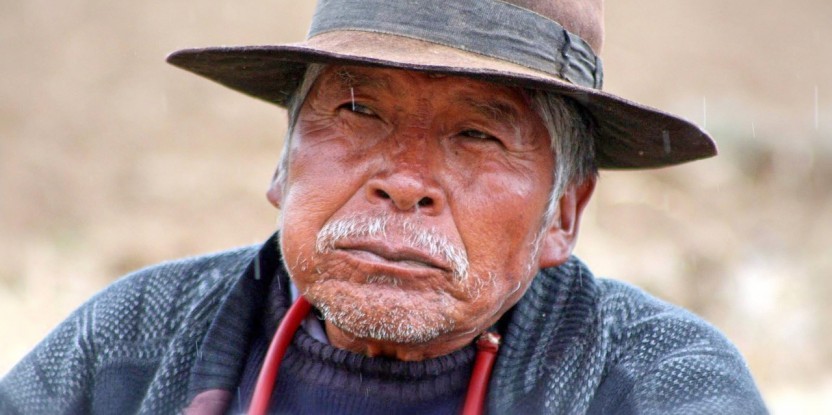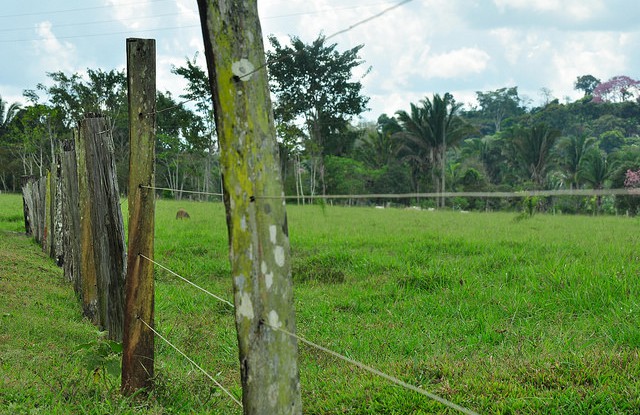Land tenure rights have been widely considered as key to improving environmental governance.
In the Brazilian state of Pará, and in Lowland Bolivia laws have been enacted taking into account the needs of local and indigenous communities.
So how successful have the laws been?
A new study compares the processes of land regularization in the regions and the authors found that tenure security on its own has not necessarily resulted in better environmental governance.
Much also depends on the social and political conditions.
TWO COUNTRIES, DIFFERENT OUTCOMES
“Interestingly, in both Bolivia and Pará there was a very intense process of agricultural frontier expansion by different actors on different frontiers, and the policy goals to address any problems were relatively similar, with emphasis given to regularizing tenure rights,” says Pablo Pacheco, one of the authors of the study and a senior scientist at the Center for International Forestry Research (CIFOR) .
“But the way in which the two countries have sought to have achieve this is very different.”
In Lowland Bolivia, priority was given to regularize rights in lands claimed by individuals — from smallholders to large-scale landholders — and communities and indigenous people. The identification of public lands, which are often forests, occurred only after the recognition of collective and individual rights.
This led to an important rush to occupy public lands, much of which ended up in private hands.
The authorities in Pará, in contrast, marked out “a mosaic” of conservation units, and made the rights of indigenous people a priority. Only after that were tenure rights to traditional communities and smallholders granted.
Without... restrictions, land regularization prompted land occupation as influential local players rushed to stake claims to uncleared forestland
Yet, the claims of individual landholders have not been solved, which is one of the main obstacles to full implementation of Brazil’s environmental policy.
Put simply, Bolivia approached land regularization from an agrarian perspective, while Pará adopted a more conservationist approach.
“Perhaps unsurprisingly better environmental governance has been achieved in Brazil as a consequence, yet improved social distribution of land has been achieved in Bolivia,” says Pacheco. “Both regions have experienced a different mix of failure and success.”
The approach to tenure regularization has been key to both stories, but Pacheco stresses that it is not the only factor.
CLARIFYING LAND TENURE
Clarifying ownership of land was expected to settle land conflict, reduce pressures on forests, and promote more optimal land uses — in line with economic assumptions.
Policy makers believed that clarifying tenure rights would also contribute to stabilizing agricultural expansion — in line with institutional perspectives.
But the actual processes did not yield such clear outcomes.
In many cases, local elites were able to secure their ownership of land they had initially acquired through illegal and semi-legal means, according to Pablo Pacheco. In these instances tenure regularization merely served to formalize inequalities of land ownership and consequently, land disputes continue to bubble on.
The Bolivian approach has emphasized land regularization in indigenous lands and individual landholdings. But it did not enact legislation to restrict the agricultural expansion into forestland or constrain forest conversion within landholdings.
“Without these restrictions, land regularization prompted land occupation as influential local players rushed to stake claims to uncleared forestland,” says Pacheco.
In Pará some of these issues were avoided as legislation was passed to regulate land uses within landholdings and community lands, mainly related to the protection of legal forest reserves and areas of permanent protection.
The establishment of the Rural Environmental Cadaster (CAR), under which landholders must adhere to environmental law, was a key measure that helped to “close” the agricultural frontier and limit deforestation, the study reports. This also reduced the rush for new land occupation.
The outcomes we observed were strongly dependent on the socio-political context in the respective regions
Stricter environmental regulations in Pará will help reduce deforestation, says Pacheco, but this is not without a social and economic cost; it is likely that those regulations will also constrain the land-use choices of smallholders, potentially making their lives harder.
In Bolivia, social pressures on land tend to remain at the cost of forests loss affecting their capacity to provide environmental services.
CATTLE PRESSURE, HUMAN PRESSURE
“The outcomes we observed were strongly dependent on the socio-political context in the respective regions,” Pacheco says.
“In Brazil in the past you’ve had greater pressure on forests, due to expansion of medium and large-scale cattle ranchers. That’s why there has been more emphasis on putting in place instruments for landholders to comply with land use regulations. In Bolivia, there was much more social pressure on the land, and the environmental goals were contested by some and this has been reflected in the policy frameworks.”
The design of tenure reforms stem from economic and institutional viewpoints — and tend to overlook socio-political contexts he says.
“But we argue that the perspective of political ecology better accounts for the processes that took place.
“The different policy results in Brazil and Bolivia were dependent on their local context, and so, of course, they took different development paths.”
For more information about land tenure work in the Amazon please contact p.pacheco@cgiar.org
CIFOR’s research on land tenure in the Amazon is part of the CGIAR Research Program on Forests, Trees and Agroforestry
We want you to share Forests News content, which is licensed under Creative Commons Attribution-NonCommercial-ShareAlike 4.0 International (CC BY-NC-SA 4.0). This means you are free to redistribute our material for non-commercial purposes. All we ask is that you give Forests News appropriate credit and link to the original Forests News content, indicate if changes were made, and distribute your contributions under the same Creative Commons license. You must notify Forests News if you repost, reprint or reuse our materials by contacting forestsnews@cifor-icraf.org.


